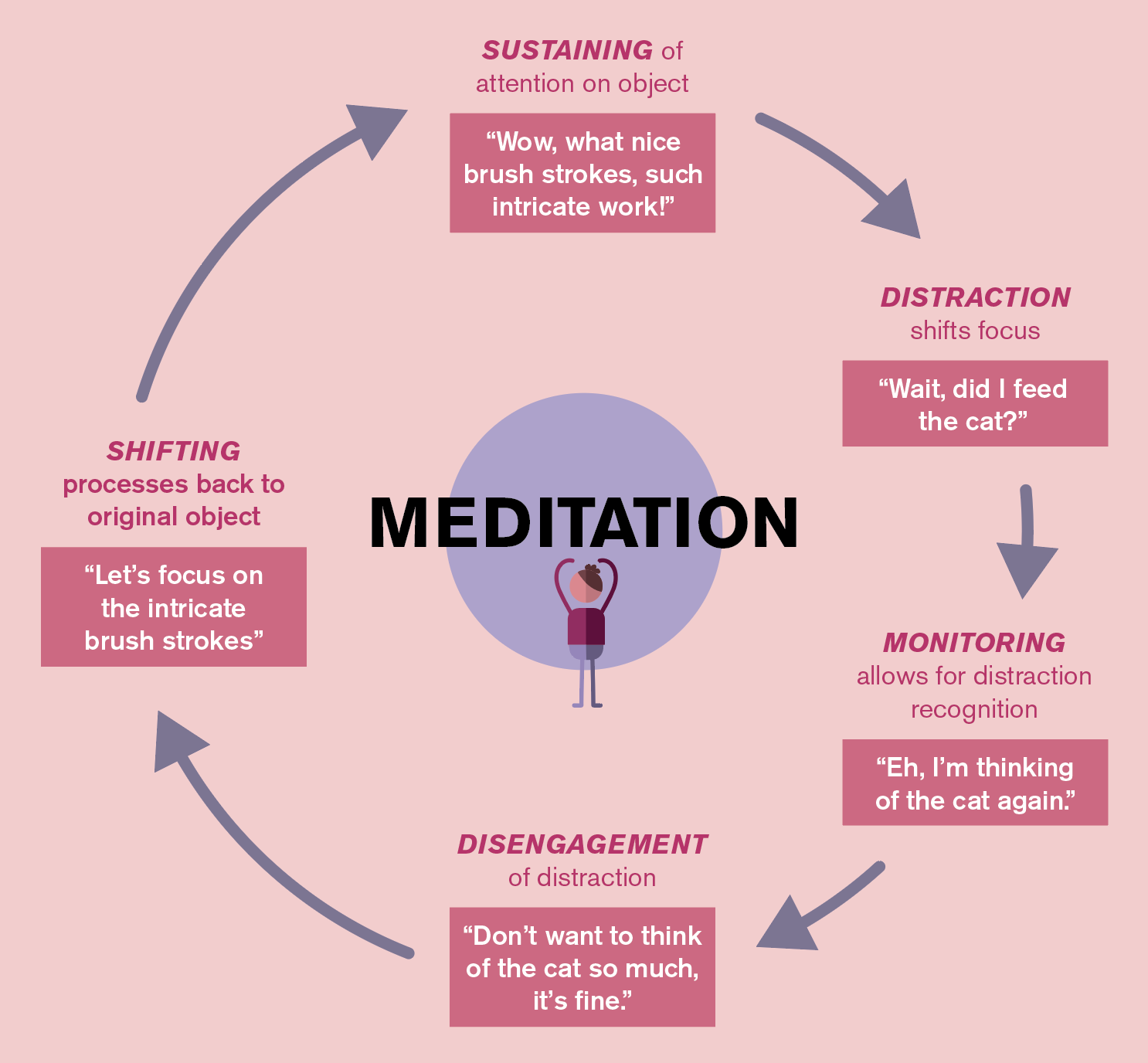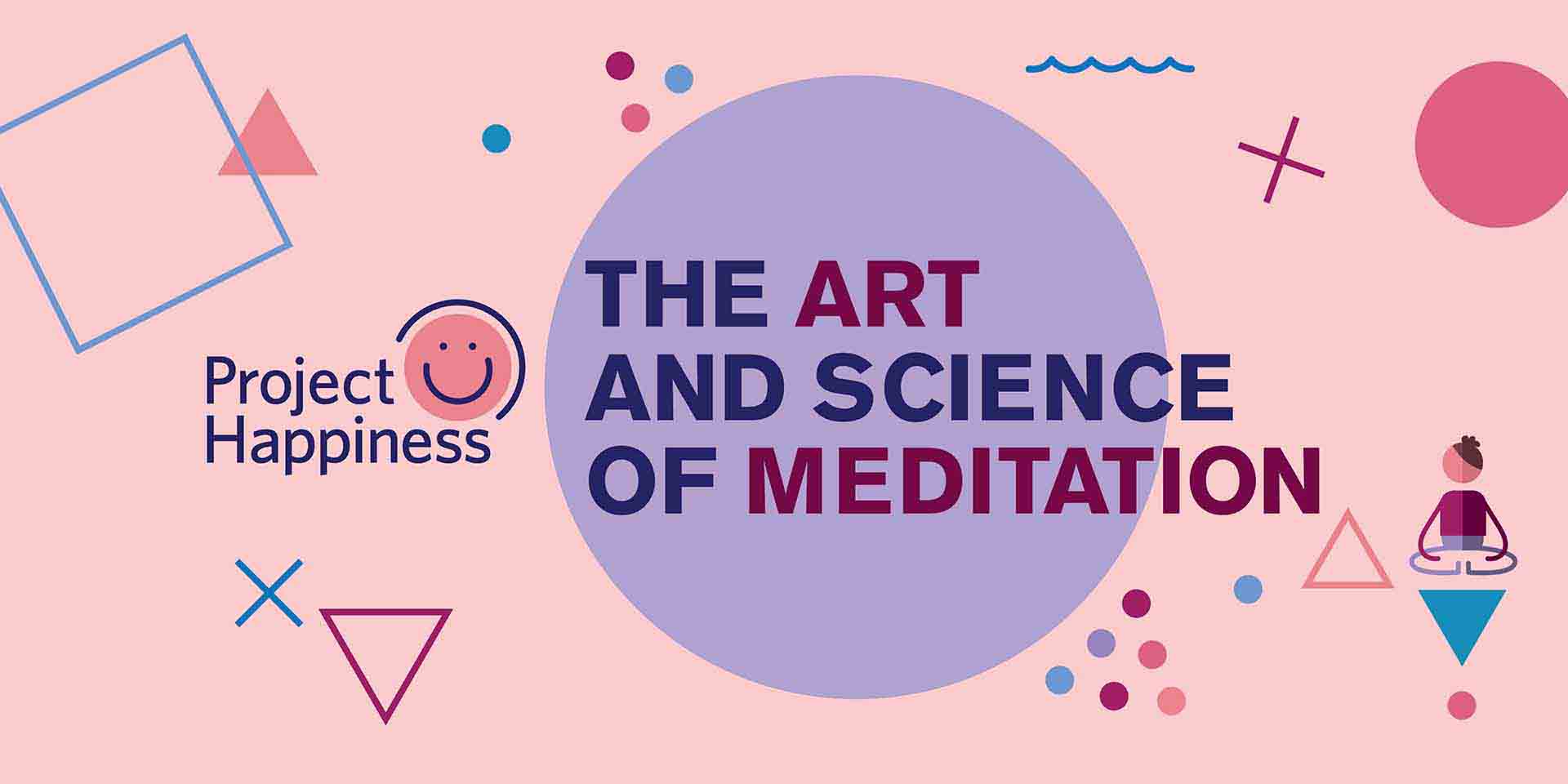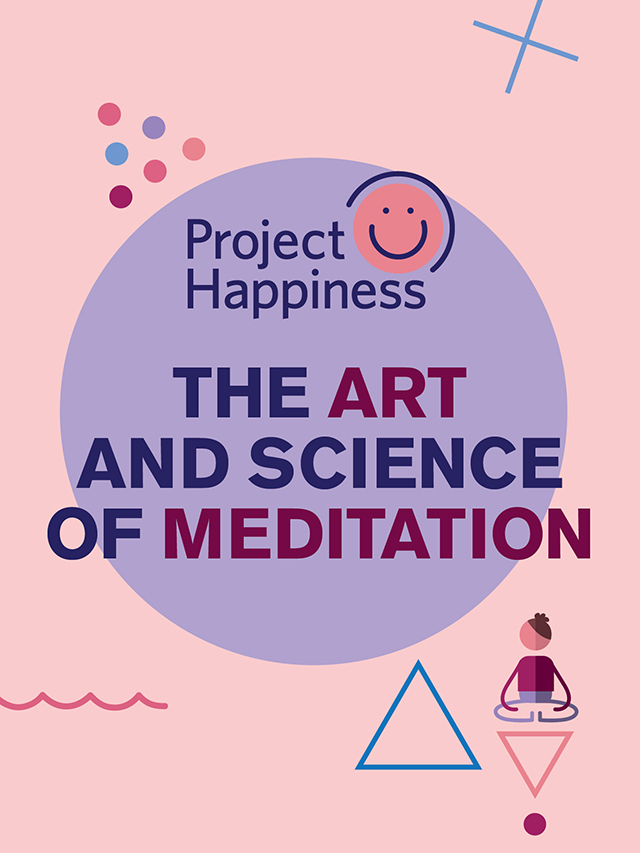The Art and Science of Meditation
PART 1 OF 4
The art museum is a place for reflection. But if we can’t visit the museum, how can we still make quiet time with art? Dr Russell Chan shares how to meditate to art, a technique known to help release emotions and improve mental well-being.
Why do you go to an art museum or gallery? To appreciate art? To see famous
paintings? To indulge your senses?
To meditate, of course.
Did you know that in the time taken to stop by a painting to take its picture
or read the artwork label, you would have devoted approximately 30 seconds to
2 minutes of undivided attention to it?
That time spent in undivided attention to the artwork was meditation.
So, if in the future someone asks you if you have meditated before, you can
recall your encounter with art at a museum and say “Yes, I have!”
Meditation and the ability to contemplate are recognised as important aspect
of experiences in relation to and beyond art. How can we improve our ability
to appreciate art and by extension, other things in our lives? Singapore Art
Museum’s (SAM)
Unwind with SAM: Art and Meditation
aims to help you with this. To truly understand and bring your meditative
experience to a higher level, it is important to first understand what
meditation is and what happens during its practice.
The definition of meditation varies in different contexts and traditions, but it is predominantly considered the practice of internal self-regulation of the mind1. Despite the differences, a large majority report positive outcomes such as improved cognition, mental health and emotional regulation following practice2-4.
Meditation focuses on training our attention, typically guided by instructions to perform a series of mental actions that is often cyclical in nature:
-
the focus is centred on the breath, bodily sensations or non-judgemental
awareness;
-
a distraction causes the mind to wander away from the central focus (also
known as the default mode);
-
a realisation that you have drifted off arises (this is a
self-monitoring);
-
you disengage from the distraction (this requires active cognitive
control);
-
and finally, a shifting process occurs that helps to bring you back to your
central focus on the original object.
Box 1. below illustrates the cyclical nature of this process, along with an example of thoughts that may take shape in your mind when you contemplate an art piece.

Box 1.: The phenomenon of the meditation process (linked by arrows) and perceived experiences (text above the pink boxes). This model has been adapted from research work3,5.
Neuroscientists like Tang and colleagues4 outline that meditation starts out as effortful as it requires attention to focus on the instructions and mental actions and. Over time and with practice, this effort of focusing shifts to reducing mind-wandering. When one becomes an advanced practitioner, meditation starts to require less effort to sustain attention in this cyclical process. This means that over time, meditation increases our ability to hold our attention on our chosen tasks, our ability to quickly recognise the distraction, and then drop the distraction (which may not be easy to do!), returning attention to the original instruction.
The practice of meditation through art may lead to other experiences. For example, you might be so captivated by the artwork that you may experience a sense of timeless wonder, where the experience of time changes for you. It might feel like you spent 5 minutes looking at the art piece when in actual fact 20 minutes have elapsed. Psychologists have referred to this as a flow state6, where there is a significant alteration of how time is perceived (either slowed down or sped up). These kinds of experiences are also cultivated by meditation7. Because meditation allows us to become witness to arising thoughts and reduce incoming distractions, we are able to enhance this flow state. These processes can enhance our experience of art, not to mention other aspects of our working life or cognition—this alone is worth practising for!
If you tuned into the first session of Unwind with SAM: Art & Meditation, streamed on Facebook Live on 17 June 2020, you would have joined me in a practice of Yoga Nidra meditation, which is a form of focused-attention meditation. I introduced the concept of Sankalpa at the start of the practice, which in Sanskrit translates as “inspired intention.” With this in mind, let us now apply what we have learnt in this article and focus on an art piece in the SAM collection, Amanda Heng’s Another Woman (1996). This work invokes a sense of reconnection, which we shared as a collective intention at the start and end of that practice for shared contemplation.

Amanda Heng. Another Woman. 1996. Photo Print (detail). Collection of Singapore Art Museum.
Another Woman is an investigation into the domestic realm of women within the traditional Chinese family. Clothed and nude photographs capture the artist’s relationship with her mother, as well as their identities as independent women to reclaim intimate mother-daughter ties often unspoken in the traditional Chinese family psyche8.
You may have held an image of the artwork in your mind when we collectively worked through the process of guided visualisation: recollecting the embrace, the softness and blackness of the hair or the wrinkles on the skin. We pondered upon reconnection with our parents, siblings and friends in this difficult period. But we were also led to realise the greater strength of these bonds; to make them closer and more authentic. This is the power of shared intention and meditation, realised through Amanda Heng’s work. We had the opportunity to cultivate it and experience a glimpse of the flow state within ourselves. The next time you are back in SAM and realise that you’ve been staring at an artwork for the last minute or so, let that soak in and enjoy the feelings and sensations arising from that experience.
The subsequent Unwind with SAM: Art and Meditation blog articles will explore different types of meditation practised among people and how they are unique in cultivating various domains of cognition, such the attentional function or creativity to enhance your art experience.
This is the first part of a four-part article series on the science behind meditation and how to apply it to art. Please click here to read part two.
About the author
Dr Russell Chan is a neuroscientist. He is fascinated by the mind and its potential for cognitive performance. Using different neuroimaging techniques, Chan investigates how meditation can impact our health, well-being and performance. He has been a yoga and meditation teacher for the last eight years and is the Director of www.primeyourmindnow.com, a website examining meditation, spirituality, cognitive neuroscience and motor control. Over the next few weeks, as you explore the unique style of Yoga Nidra meditation with him, he hopes that you will enjoy the journey and come to a deeper understanding of the science behind meditation.
_____
References:
1 Lee DJ, Kulubya E, Goldin P, Goodarzi A, Girgis F. Review of the Neural Oscillations Underlying Meditation. Frontiers in neuroscience. 2018;12:178.
2 Kabat-Zinn J, Massion AO, Kristeller J, et al. Effectiveness of a meditation-based stress reduction program in the treatment of anxiety disorders. The American journal of psychiatry. 1992;149(7):936-943.
3 Malinowski P. Neural mechanisms of attentional control in mindfulness meditation. Frontiers in neuroscience. 2013;7:8.
4 Tang YY, Holzel BK, Posner MI. The neuroscience of mindfulness meditation. Nature reviews Neuroscience. 2015;16(4):213-225.
5 Chan RW. From stillness to action : meditation-based enhancement of cognitive control processes underlying motor sequence learning, Thesis (PhD(Human Movement))--University of South Australia, 2018.; 2018.
6 Koehn S, Morris T. The relationship between performance and flow state in tennis competition. J Sports Med Phys Fitness. 2012;52(4):437-447.
7 Chen J-H, Tsai P-H, Lin Y-C, Chen C-K, Chen C-Y. Mindfulness training enhances flow state and mental health among baseball players in Taiwan. Psychol Res Behav Manag. 2018;12:15-21.
8 Michelle Ho. (2012). Amanda Heng. In Tan, BH., Toh, Joyce. (Editors), Tomorrow, Today: Contemporary Art from the Singapore Art Museum (2009 – 2011), (30). Singapore Art Museum.


